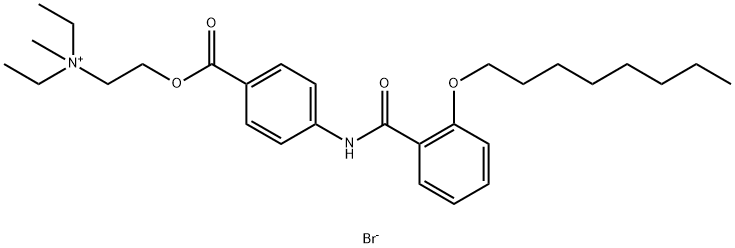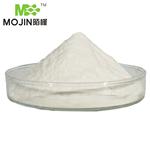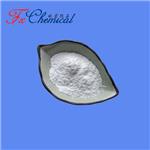Pharmacological effects
Otilonium bromide is an anticholinergic and antispasmodic drug. Its trade name is Siba Min. It can regulate the flow of calcium between intestinal smooth muscle extracellular and intracellular calcium pools. It is selective to gastrointestinal smooth muscle, and it has strong antispasmodic effect. It is applied to all motor function hyperthyroidism, and spasm reaction for different reasons and different parts as well as smooth muscle fibers pathological atrophy caused spasm reaction. It is also applied to the treatment of gastrointestinal distal intestine irritable bowel syndrome (IBS) or spastic pain, spastic colon, gastroenteritis, stomach, duodenum and esophagus disease, and endoscopic examination preparation (esophagoscopy, gastroscopy, ten finger colonoscopy and proctoscope). The experimental data show that the drug is absorbed very little by oral medication, and the most absorbed drug passed the biliary tract and were excreted via the stool.
The above information is edited by the chemicalbook of Kui Ming.
Toxicology
Acute toxicity: Non-lethal dose of oral administration to rats 1500mg/kg, to dogs is 1000mg/kg.
Chronic toxicity: experimental animals according to the program: 180 days of continuous oral administration, 11.44mg/kg/otilonium bromide. We found no abnormal changes in the results of blood biochemical and histological examination.
Teratogenicity: according to 11.44mg/kg, no embryonic and teratogenic toxicity to rats and rabbits in experiments.
Gene mutations: a large number of experiments have shown no mutagenic effect.
Side effects
Therapeutic doses of otilonium bromide doesn’t cause side effects, and it doesn’t cause atropine-like effect.
Precautions
Patients with glaucoma, prostatic hypertrophy, pyloric stenosis, pregnant or lactating women, and patients known allergic reaction to otilonium bromide should be used with caution.
Uses
Treatment of gastrointestinal spasm.
Description
Otilonium is an inhibitor of L-type (IC
50 = 2.3 μM) and T-type calcium channels (IC
50s = 0.8, 1.1, and 0.4 μM for Ca
v3.1, Ca
v3.2, and Ca
v3.3, respectively). It is also an antagonist of muscarinic acetylcholine receptors (mAChRs; IC
50s = 0.054, 0.4, 0.222, and 0.156 μM for M
1, M
2, M
4, and M
5 muscarinic receptors, respectively) and the platelet activating factor (PAF) receptor (IC
50 = 0.0552 μM). Otilonium inhibits the inward calcium current in isolated rat colonic smooth muscle cells (EC
50 = 885 nM), an effect that can be blocked by the L-type calcium channel inhibitor nifedipine . It inhibits contractions induced by the muscarinic acetylcholine receptor (mAChR) agonist methacholine in isolated circular muscle of the guinea pig proximal colon (IC
50 = 3.7 μM). Otilonium (4 mg/kg) decreases fecal excretion and wet dog shakes and increases the tail withdrawal latency in the tail-flick test in a rat model of opioid withdrawal syndrome induced by morphine and naloxone.
Chemical Properties
White Powder
Originator
Spasmomen,Minapharm Co.
Uses
Otilonium bromide is an antimuscarinic
Uses
antimuscarinic used as a spasmolytic agent
Uses
Octylonium bromide is an antimuscarinic. Octylonium bromide is a platelet-activating factor antagonist as analgesic, anti-inflammatory, uterine contraction inhibiting, and anti-tumor agent.
m bromide is used as an antispasmodic.
Uses
Inhibits platlet activating factor induced hypotension. Antispasmodic
Manufacturing Process
3 Methods of producing of p-[2-(n-octyloxy)benzoyl]aminobenzoate of Ndiethylammoniumethanol:
1. 21.20 g (0.1 mole) of o-octyloxybenzoyl chloride and aqueous 10% NaOH are added at room temperature, with stirring and by slow dropping to 23.63 g (0.1 mole) of 2-diethylamine-ethyl-p-aminobenzoate in 100 ml of water, in such a manner as to keep the reaction mixture slightly alkaline. After concluding the slow dropping the solution is kept under stirring for 1 h and then the precipitate is collected. This precipitate, p-[2-(n-octyloxy)benzoyl] aminobenzoate of N-diethylammoniumethanol dried and recrystallized from hexane, has a melting point of 81°-82°C.
2. To 31.3 g (0.1 mole) of p-[2-(n-octyloxy)benzoyl]aminobenzoate acid in 300 ml of ethanol, are added 4.0 g (0.1 mole) of finely ground NaOH and the whole is heated to reflux for 1 h. Then 20.25 g (0.15 mol) of 2
Trade diethylaminoethyl chloride are slowly dropped under stirring and the heating is continued for 4 h. After cooling, the sodium chloride formed is filtered off and the solvent is separated by distillation, and the excess of the base, under a reduced pressure. The residue of p-[2-(n-tyloxy)benzoyl]aminobenzoate of Ndiethylammoniumethanol, recrystallized from hexane, has a melting point of 81°-82°C.
3. 11.7 g (0.1 mole) of N-diethylaminoethanol in 200 ml of anhydrous pyridine are added by careful dropping, 34.7 g (0.1 mole) of the chloride of p[2-(n-octyloxy)benzoyl]aminobenzoate acid and the mixture is heated in a water-bath for 3 h. The solvent is then separated by vacuum concentration, the residue is taken up with water, alkalinized and extracted with ether. The collected ether extracts, anhydridised owing to the separation of the solvent, leave a residue of p-[2-(n-tyloxy)benzoyl]aminobenzoate of Ndiethylammoniumethanol which, recrystallized from hexane, has a melting point of 81°-82°C.
p-[2-(n-Octyloxy)benzoyl]aminobenzoate of N-diethylmethylammoniumethyl bromide may be prepared by reaction of the p-[2-(n-octyloxy) benzoylaminobenzoate of N-diethylammoniumethanol with methylating agents such as methylbromide
Therapeutic Function
Anticholinergic, Spasmolytic
General Description
Otilonium bromide is an antispasmodic. It contains a red color ACh (acetylcholine) like moiety bound to an aromatic system that ends with an octyl ether.
Biochem/physiol Actions
Otilonium Bromide is a muscarinic receptor antagonist (antimuscarinic). Otilonium Bromide is a quaternary ammonium salt that exerts spasmolytic action selective on the distal gastrointestinal tract. It is used world-wide for the treatment of irritable bowel syndrome (IBS).
Safety Profile
Poison by intraperitoneal route. Moderately toxic by ingestion and subcutaneous routes. When heated to decomposition it emits toxic fumes of Brí and NOx.






